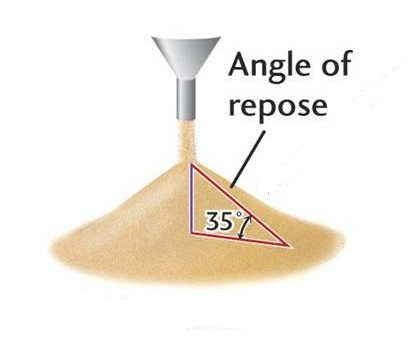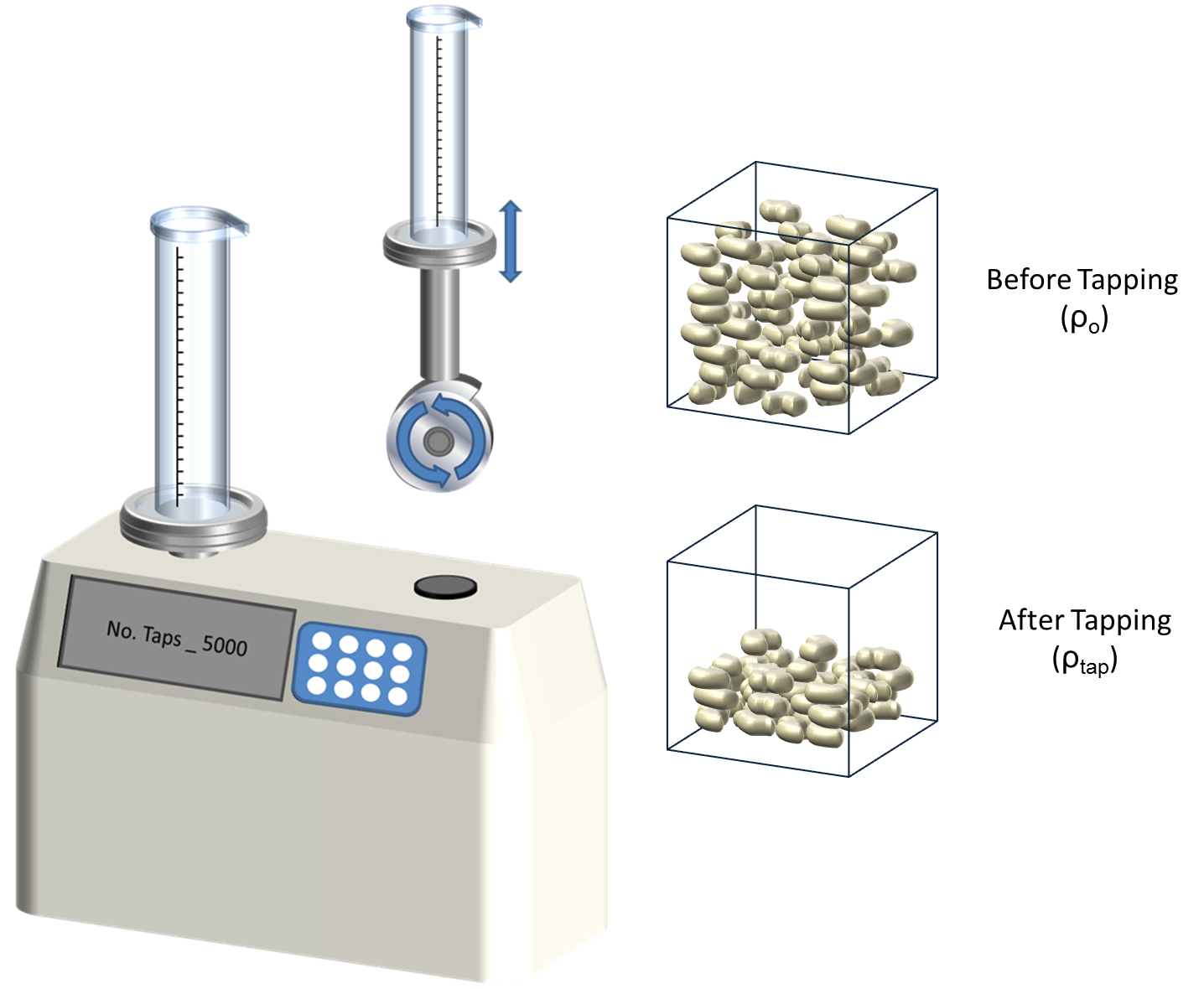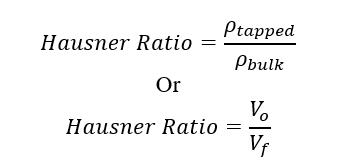Mixing and blending of pharmaceutical API depends on many physical factors of the powder among which is the powder flow that can be determined by the following methods:
The following are methods for characterizing powder flow that have appeared most frequently in the pharmaceutical literature.
any method of measuring powder flow should be practical, useful, reproducible, sensitive, and yield meaningful results. It bears repeating that no one simple powder flow method will adequately or completely characterize the wide range of flow properties experienced in the pharmaceutical industry.
1- Angle of Repose

The angle of repose has been used in several branches of science to characterize the flow properties of solids
Angle of repose is a characteristic related to interparticle friction or resistance to movement between particles
The angle of repose is the constant, three-dimensional angle (relative to the horizontal base) assumed by a conelike pile of material formed by any of several different methods.
A variety of angle of repose test methods are described in the literature. The most common methods for determining the static angle of repose can be classified on the basis of the following two important experimental variables:
- The height of the “funnel” through which the powder passes may be fixed relative to the base, or the height may be varied as the pile forms.
- The base upon which the pile forms may be of fixed diameter or the diameter of the powder cone may be allowed to vary as the pile forms.
The funnel height should be maintained approximately 2–4 cm from the top of the powder pile as it is being formed in order to minimize the impact of falling powder on the tip of the cone
Flow Properties and Corresponding Angles of Repose table

2- COMPRESSIBILITY INDEX AND HAUSNER RATIO

The compressibility index has been proposed as an indirect measure of bulk density, size and shape, surface area, moisture content, and cohesiveness of materials because all of these can influence the observed compressibility index.
The compressibility index and the Hausner ratio are determined by measuring both the bulk volume and the tapped volume of a powder.
Procedures for calculation:
1- Weigh a suitable quantity of powder.
2- Transfer the powder to a suitable graduated cylinder and record the volume, which is taken (volume before tapping Vo).
3- Tap the measure repetitively until the powder reaches a constant volume and record the volume after tapping (Vf).
4- Bulk density is calculated as follow:

5- Tapped density is calculated as follow:

6- Compressibility of a material can be estimated from the tapped and bulk density or from the unsettled apparent volume and final tapped volume by the following equation:

7- Hausner ratio of a material can be estimated from the tapped and bulk density or from the unsettled apparent volume and final tapped volume by the following equation:

Based on the result values from the previous equations we can determine the powder flow Characteristics based on the following table:

